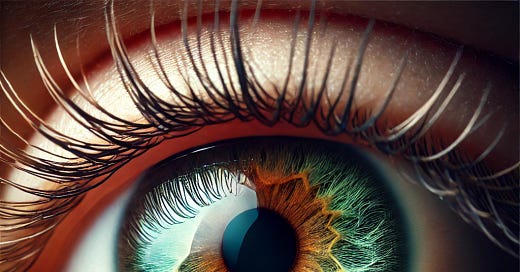As a holistic ophthalmologist, one of the most crucial decisions I help patients make is determining whether their eye symptoms require immediate attention. While most floaters are harmless, some can signal a sight-threatening emergency. This guide will help you understand the critical differences and know when to seek urgent care.
The Critical First Minutes Matter
When new eye symptoms appear, the first 24 hours are crucial. A retinal tear can progress to a detachment rapidly, and early treatment can mean the difference between a simple laser procedure and major surgery – or even vision loss.
Normal Floaters: What They Look and Feel Like
Typical, non-emergency floaters usually:
Appear as transparent gray or black specs or threads
Move slowly with your eye movements
Are more visible against bright backgrounds
Have been present for months or years
Don't interfere with your overall vision
Tend to settle down when your eyes are still
Are not accompanied by other symptoms
Red Flag Symptoms: When to Seek Emergency Care
1. The "Shower of Dots"
If you suddenly see what looks like hundreds of new tiny black dots, as if someone shook pepper in your eye, this could indicate a posterior vitreous detachment (PVD) with potential retinal damage. While a PVD itself isn't dangerous, it can sometimes tear the retina.
2. Flashes of Light
Light flashes that warrant immediate attention include:
Repeated lightning-like streaks
Camera-like flashes in dim lighting
Persistent sparkles in your side vision These flashes occur when the retina is being tugged or torn and require same-day evaluation.
3. The "Curtain" or "Shadow"
Perhaps the most serious sign is a dark shadow that:
Appears in your peripheral vision
May move across your visual field
Looks like a curtain coming down
Creates a blind spot This often indicates a retinal detachment and requires emergency surgery within hours.
Timing and Progression Matter
Urgent Warning Signs:
Sudden onset of symptoms (minutes to hours)
Rapidly worsening symptoms
Multiple symptoms occurring together
Symptoms in one eye only
Vision loss in any pattern
Less Urgent Patterns:
Gradual development over weeks
No change in severity
Single, stable symptom
Similar symptoms in both eyes
No vision changes
High-Risk Groups Should Be Extra Vigilant
You need to be particularly alert if you:
Are highly nearsighted
Have had previous eye surgery
Have diabetes
Have experienced eye trauma
Have a family history of retinal problems
Are over 50 years old
The Holistic Connection
While retinal emergencies require conventional medical intervention, several systemic factors can increase your risk:
Lifestyle Factors:
Chronic dehydration
High blood pressure
Poor blood sugar control
Excessive physical strain
Inflammatory conditions
Preventive Measures:
Stay well hydrated
Maintain healthy blood pressure
Control blood sugar
Avoid heavy lifting during high-risk periods
Support eye health with proper nutrition
What to Do If You Suspect an Emergency
Document Your Symptoms
Note the time they started
Track any changes
Record which eye is affected
Map any visual field changes
Take Immediate Action
Call your eye doctor's emergency number
Go to an emergency eye clinic
Avoid strenuous activity
Keep your head elevated
While Waiting for Care
Rest your eyes
Avoid straining or heavy lifting
Stay upright when possible
Write down your questions
Prevention: A Holistic Approach
While some retinal problems aren't preventable, you can reduce your risk through:




